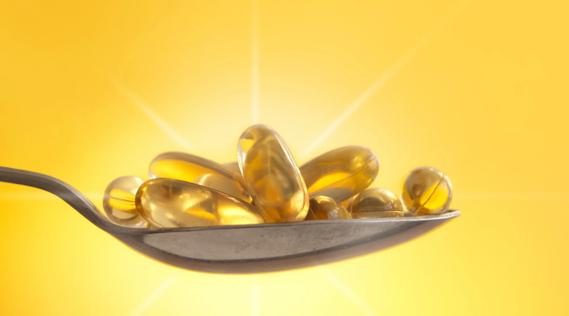Lysol Disinfecting Wipes are just one of more than 500 products approved by the EPA for protection against the SARS-CoV-2 virus that causes COVID-19

Few things feel more awful than getting over a cold just to get sucked right back into sickness. And with COVID-19, you can get it more than once, including back-to-back infections, if your immune system is unable to steer clear of the virus.
Advertisement
Cleveland Clinic is a non-profit academic medical center. Advertising on our site helps support our mission. We do not endorse non-Cleveland Clinic products or services. Policy
As the SARS-CoV-2 virus that causes COVID-19 can survive on other surfaces for days, keeping your environment clean is key to preventing the virus from spreading and reducing your chances of reinfection.
But which disinfectant wipes work best? Can Lysol® really kill COVID-19 when it’s lingering in the air or on your bedside table? Or are there other products out there you can turn to that will help disinfect your home from COVID-19 and other infectious germs?
Infectious disease specialist Carla McWilliams, MD, answers these questions and explains what you should know about disinfecting wipes, including how to use them safely and effectively.
These disposable cleaning wipes have a germ-killing solution on them. “They’re designed to kill viruses and bacteria on hard surfaces like doorknobs, counters, TV remotes and even phones,” says Dr. McWilliams. They don’t work on soft surfaces like clothing or upholstery, but disinfecting sprays use similar germ-killing solutions, some of which can be used on soft surfaces like couches, mattresses or pet beds.
The germ-killing ingredient on disinfecting wipes is a chemical pesticide, so you shouldn’t use them directly on your skin. You also shouldn’t use them on food (for example, don’t clean an apple with one before you eat it).
Advertisement
The word “pesticide” may be concerning, but don’t panic. As long as your disinfecting wipes or sprays are registered with the U.S. Environmental Protection Agency (EPA), they’re safe to use as directed.
Early in the pandemic, the EPA approved two disinfecting products that were tested in a lab and proven to kill the SARS-CoV-2 virus that causes COVID-19: Lysol Disinfecting Spray and Lysol Disinfecting Max Cover Mist. Although these were the first products approved by the EPA to kill COVID-19 in 2020, the EPA has since approved more than 500 disinfecting products for use on home surfaces that can kill and stop the spread of COVID-19.
Now, some products online and in the store will claim to have disinfecting properties without actually having the right ingredients. You can know for sure which products are the best disinfectant for COVID-19 by checking the EPA’s website and searching for specific products that are registered COVID-19 disinfectants or by reading the product labels and seeing which viruses it’s been tested to target
Lysol Disinfecting Wipes, for example, have been proven to target specific COVID-19 variants after just 15 seconds of use on hard surfaces like doorknobs, countertops, windowpanes, bed frames and booster seats.
“The label will tell you what germs the disinfecting wipes can kill, so look for the COVID-19 virus on the label,” advises Dr. McWilliams. “There are hundreds of EPA-registered disinfectants that can kill the COVID-19 virus. Don’t worry about one particular ingredient or brand. Just read the label.”
Disinfecting wipes are for hard surfaces in your home. If your wipes say “sanitizing” or “antibacterial,” they’re probably for your hands.
“Antibacterial wipes kill bacteria, not viruses,” clarifies Dr. McWilliams. “They’re usually for your hands, but read the directions to be sure. And COVID-19 is a virus, not bacteria, so antibacterial wipes may not kill it. That’s why reading the label is so important.”
Sanitizing wipes may be alcohol-based wipes for your hands, or they could be disinfecting wipes for surfaces. Read the label so you know what you’re getting.
Disinfecting wipes contain chemicals, so they have safety steps to follow. Use them as directed to make sure those unwelcome germs are gone for good.
Advertisement
After the contact time is up, you can rinse off the disinfectant if you wish. “Definitely rinse it off if the surface will come into contact with food,” Dr. McWilliams advises. “You don’t want to accidentally ingest the disinfectant.”
If you follow the steps above, they are. But stick with one product. Mixing two different household cleaners — even so-called natural cleaners — can create toxic fumes. These fumes can cause:
If you’re exposed to cleaning fumes from mixing chemicals, get everyone out of the house. If anyone feels unwell, get them medical care or call emergency services.
Maybe you want to clean the old-fashioned way. Do you really have to use a COVID-19 disinfectant, or will a rag and some soapy water be enough?
According to guidance from the U.S. Centers for Disease Control and Prevention (CDC), as long as no one with COVID-19 is in your home, washing surfaces with water and soap or detergent once a day is a sufficient first step to keeping germs at bay. But there are still reasons to use disinfecting sprays or wipes when COVID-19 is involved according to the CDC says, including:
Advertisement
“Using disinfectant ingredients is important in protecting your home if someone brings COVID-19 into your home,” Dr. McWilliams says. “There’s nothing wrong with soap and water for everyday cleaning. But in certain cases, disinfectant is better at killing all the germs than when you clean with soap and water alone.”
Bleach is a notorious germ-killing machine. But it’s also very harsh.
“Bleach is effective if you dilute it correctly,” says Dr. McWilliams. “Don’t use it full strength. But even diluted, it can ruin surfaces and fabrics, so it’s not practical in many cases.”
Some COVID-19 disinfecting wipes contain bleach as their active ingredient. Check the label. Never mix bleach with other cleaners or chemicals, including natural cleaning products.
COVID-19 has made us hyperaware of germs. Cleaning once a day with soap and water is a good approach, and wiping your household surfaces with EPA-approved disinfecting wipes as needed is a sure-fire bet to making sure you reduce the spread of COVID-19 and the possibility of reinfection.
Advertisement
But cleaning alone can’t keep COVID-19 away. What will is making sure you’re up-to-date on your COVID-19 vaccines.
Learn more about our editorial process.
Advertisement

Most can return to work or school when they’re symptom-free for 24 hours

Covering your mouth when you cough and staying home when you’re sick are a couple ways to help keep yourself and others COVID-free

This vital nutrient supports your health, but its role in COVID-19 prevention and treatment isn’t proven

Studies have shown promising results, but additional research is needed

Infection and inflammation can cause you to lose your voice and have other voice changes until you’re fully healed

A COVID-19 infection can bring on depression or anxiety months after physical symptoms go away

Just like the flu, COVID-19 continues to evolve every year with new and smarter variants

The latest omicron subvariants carry specific mutations that may allow the SARS-CoV-2 virus to be better at evading immune protection

Start having sex about 72 hours before ovulation, then at least every other day during your fertile window

Attachment theory suggests that your earliest relationships shape connections throughout your life

It isn’t a recognized mental health disorder, but research shows that problematic social media use can negatively affect your mental health, self-esteem and sleep